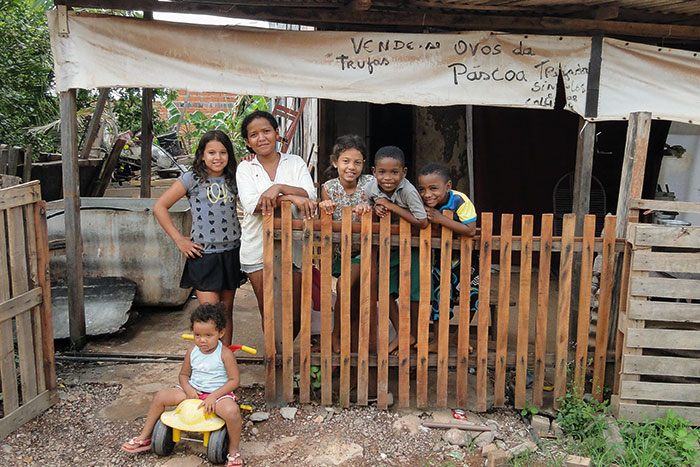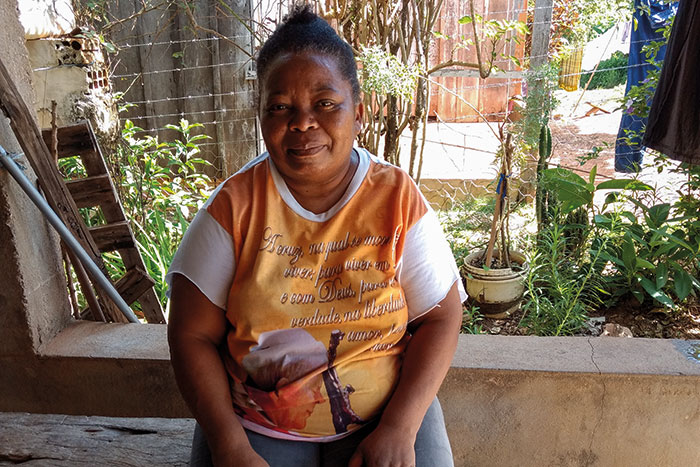Slums resist, challenge urbanization
February 20, 2018 09h00 AM | Last Updated: February 23, 2018 09h58 AM
Slums are a complex subject that triggers a lot of discussions about urbanization, infrastructure and identity policies. Between 1991 and 2010, the population living in these areas – called subnormal agglomerates by the IBGE – increased more than 60%, changing from slightly less than seven million to 11.4 million persons, according to the Population Census.
Such figures only reinforce the importance of getting to know the reality of those living in these areas. The IBGE surveys on this subject are directly related to the generation of indicators for the Sustainable Development Goal - SDG 11.1, which is "by 2030, ensure access for all to adequate, safe and affordable housing and basic services, and upgrade slums".
Assorted names for slum
Slum is the most common name in the media. But it can also be called glen, invasion, wetland, village, neighborhood – depending on the place and on who talks. In Rio de Janeiro, for instance, the word community has been used to talk about these spaces in order to include the interaction aspect and reframe the immediate association between slum and violence.
But it is not a consensus: some people defend the term slum as a statement of self-identity, resistance and denunciation of its conditions, and believe that talking about communities means erasing and hushing these issues.
For the IBGE, "subnormal agglomerates" represent a set of at least 51 housing units occupying or that have occupied, until recently, a terrain owned by third parties – either public or private – usually arranged in a disordered and dense way and lacking basic services.
Vicinity of noble areas
Recent experiences have been demonstrating that the agglomerates represent not only a dwelling place, yet they take the potential of transformation of the reality of their residents. Cultural and educational projects have been gaining more and more space, taking leisure and inclusion to places like Pirambu, one of the ten largest agglomerates in Brazil, located in Fortaleza (CE).
Geraldo Damasceno, a drama teacher, coordinates a cultural project in the community he lives: "Our NGO produced 18 short films, one medium-length and two full-length films with actors formed in the community", says him.
The community of Tavares Bastos, in the Southern Zone of Rio de Janeiro (RJ), has a stunning view of the Guanabara Bay and easy access to major urban services, without paying much for them. Resident Magali Gonçalves explains: Here you walk down and find a school, a market. Those who study or work don´t need to spend hours commuting.
The same happens in Ilhinha, in São Luiz (MA), located among affluent neighborhoods. Born and raised there, Marcionílio Silva says he is proud to live in the community. "We have everything here, hair salons, snacks bars, drugstores, clothing stores, it is not necessary to go downtown".





Violence, lack of infrastructure and resistance
Although an initial analysis may suggest that the exposure to urban violence is intrinsic to these spaces, it is worth recalling that it was not always like this. Families that live in the same area for generations perceive the changes over time.
"Our home belonged to my great grandfathers", tells Marli Silva, resident in the Senhor dos Passos village, in Belo Horizonte (MG). It is well located beside Lagoinha, a noble district in the capital of Minas Gerais, though it lacks security. We are losing many 15-year old, 20-year old youngsters, they die early due to crime", reports her.
Another very common problem: the lack of legalized addresses. In the neighborhood of Sol Nascente, in Várzea Grande (MT), resident Ana Maria da Silva Costa cannot receive her mailing. "We don´t have a zip code and so we don´t have the right to send a letter or receive something through the mail. I live here for 27 years and this never changed", vents her.
Characteristic of many agglomerates, the lack of paving in the streets causes health problems in dwellers of Parque Mariana, in Cuiabá (MT), according to resident Kívia Patrine. "We have a lot of allergic children with bronchitis and asthma due to dust."
The same problem hampers the locomotion of residents in Jardim Brasil Sul allotment, in Olinda (PE). Truck driver José Juvenal, a resident, reports that he already helped a dweller, because the ambulance could not overcome some holes in the streets. "I had to get my truck and take that person until the entrance road", tells him.
Even facing difficulties, many residents don´t express their willingness to move from where they live. Born in Piauí, Raimundo Nascimento lives in Morro Santa Teresa, on the banks of Guaíba River, in Porto Alegre (RS), and tells that the community got together to resist to any attempt of removal.
"I am very proud of my neighbors of Rio Grande do Sul, we got together and hindered they take the village from us", states him.
Access here to know more about the concept of subnormal agglomerate at the IBGE.




















